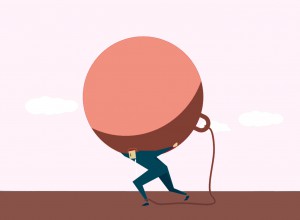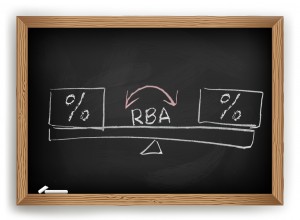[ad_1]
Please use the menu below to navigate to any article section:
You were probably taught by your parents to get a good education, a good job, buy a home, work really hard, and pay off your debt.

Instead, you should recycle the equity in your home and convert it into productive debt to buy income-producing assets.
But before we start delving into all things debt recycling, let’s start out by clarifying the difference between good and bad debt, and how having debt can actually benefit you, and set you on the path to financial freedom.
The three types of debt
- Bad debt:
This is a debt against assets that depreciate in value.
Bad debt generally refers to things like credit cards or other consumer debt that does little to improve your financial outcome. - Necessary debt:
This is the non-tax-deductible debt against your home, but it’s something essential that can’t really be avoided. - Good debt:
This is a tax-deductible debt against income-producing and appreciating assets. Think loans against residential investment properties business loans.
This is the type of debt that can help build wealth and bring you cash flow over time.
Not all debt is bad debt
Somewhere along the line, you were probably taught that debt is a problem.
But, I don’t agree with that.
Having debt is not a problem.
Not being able to repay your debt (or interest on your debt) is the problem and that’s why it’s so important to understand the difference between good and bad debt.
Having said that, in today’s economic environment I believe good debt is an asset.
Now I know that may sound counterintuitive but let me explain…
In the old days, when you owned an investment property your mortgage repayments would have likely been more than the rental income you received meaning most “investment grade” properties were negatively geared – and this resulted in a cash flow shortfall.
The tenant would have contributed to some of your mortgages by paying you rent, the taxman would have assisted with depreciation allowances and negative gearing benefits, but each month you would have had to contribute to your mortgage repayments.
However, today, taking on good debt and borrowing at historically low-interest rates and using leverage to grow your assets while at the same time receiving rent that is likely to cover your interest payments is a sound investment strategy.
Your cheap debt is an asset because you are using it to create more equity (as the value of your investment property improves) plus cash flow.
And you can accelerate this by using debt recycling.
What exactly is debt recycling?
Simply put, debt recycling is a strategy that turns your current home equity into a tax-deductible investment loan.
If like many Australians you bought your home a while ago and have been slowly re-paying your mortgage debt, and all the while your property has increased in value, you would now have significant equity in your home.

Previously that debt against your home was “necessary debt” but re-borrowing or recycling those funds means you now have “good debt” because, as I just explained, you can use this to buy an appreciating asset that will bring in cash flow every month.
But here’s the catch – to recycle your equity into good debt, the debt can’t just be used for anything.
If you borrow against the equity in your home to buy a car or as other debt used for personal purposes, the interest payments are not tax-deductible.
Just to make things clear, it’s not the security against with you borrow the money (your home) which determines if the interest payments are tax-deductible.
It’s the purpose of the loan such as borrowing to invest, which makes interest tax-deductible.
How does debt recycling work?
Debt recycling may be a little confusing, so let’s explain it with a seven-step guide.
1. Over time you will have paid down a portion of your home mortgage with a principal and interest loan and during that time your home would have increased in value.
The difference between the current value of your home and the outstanding amount on your mortgage is your equity.
2. The bank will often lend you up to 80% of the value of your home as long as you can show serviceability.
3. You would take out a new investment loan using your available home equity as security and the purpose of this loan would be to use the funds as a deposit on an investment property.
Imagine your home is worth $600,000 and your available equity is $300,000 because you’d paid your mortgage down to $300,000.
You could recycle $150,000 of this equity as a loan – in other words, take out a new investment loan for $150,000 which would be then used as a deposit for an investment property, using the equity in your home as security.
This would leave you with a loan to value ratio of 75% ($450,000 loan on a $600,000 property) well within banks lending parameters.
4. You could use this $150,000 to invest in assets that produce both income and capital growth such as a managed fund, shares or as a deposit against an investment property.
5. You could even use the income generated from your investments, plus any tax advantages of a geared investment, to pay off the non-deductible debt in your home loan.
6. Over time you will build your wealth as your investment property or share portfolio should increase in value over time and the cash flow you receive in the form of rental or dividends should also increase.
7. At the same time you will slowly be paying down the mortgage on your home, so that when you reach your retirement years and start enjoying the longest holiday you will have in your life, you will own your own home with no debt and have an investment portfolio of properties or shares (preferably both) with a manageable level of debt.
In order for a debt recycling strategy to work you need the following:
- A regular, independent income you can rely on to deliver a surplus cash flow to cover the interest payments on your investment loan.
- A long-term investment focus.
- A willingness to increase your debt and hold an investment loan.
- Tolerance for risk and short-term fluctuations in investment value.
- Income protection insurance—it may provide replacement income in case you’re sick or injured and unable to work.
- And the financial rainy day, cash flow buffer to see you through the ups and downs of your property investment journey – this could be in the form of money in an offset account
So now that you understand a little more about debt recycling, you can see that good debt isn’t really a problem – in fact, you can be an asset.
But aren’t interest rates going up soon?
There’s a lot of talk about interest rates in the media recently isn’t there?
On the one hand, the Reserve Bank is saying rates are not going up any time soon.
And on the other hand, rising property prices and decreasing housing affordability is causing many commentators to suggest interest rates are going to rise sooner rather than later.
But recently RBA Governor Philip Lowe once again asserted that rates won’t rise any time soon.
He said he finds it difficult to understand why the market is pricing in rate action 2022 and 2023 and confirmed that interest rate will only rise when inflation hits the target of between 2.5% to 3% and stays there for some time.
Clearly, our rising house prices are not going to affect the RBA’s interest rate decisions and Governor Lowe confirmed that house prices and housing affordability are not the domain of the RBA.
“ …the Board has said that it will not increase the cash rate until actual inflation is sustainably within the 2–3 per cent target range. It won’t be enough for inflation to just sneak across the 2 per cent line for a quarter or two. We want to see inflation around the middle of the target range and have reasonable confidence that inflation will not fall below the 2–3 per cent band again.” RBA Gov Lowe: Delta, the Economy and Monetary Policy
I know many people are concerned about inflation rising, and I agree if inflation does rise sustainably, the RBA will raise interest rates a little slow the economy down.
But before that happens inflation will need to remain in the range of 2.5-3% for some time; wages will need to rise and our economy will need to be booming.
And of course, that means the value of assets including real estate will have gone up between now and then (when interest rates eventually rise.)
And when the RBA does increase interest rates we are likely to get a few small increases – rates are not going to go up to 6 or 7%.
The RBA won’t want to smash the economy.
And rising rates won’t mean that scores of Aussies will fall into mortgage default like some of the scaremongers are suggesting.
Remember banks are currently stress testing serviceability for new loans at interest rates of more than 5% to ensure borrowers won’t get caught out.
So I’d plan for low-interest rates to persist until something significant changes.
This means that for those who have a steady job and good cash flow, borrowing makes sense in today’s low-interest-rate environment.
As I said, good debt is an asset today when you can borrow at 3% and buy an investment-grade property that will increase in value at 7-10% per annum over the long term.
How are you going to take advantage of this low-interest-rate environment?
[ad_2]
Source link




